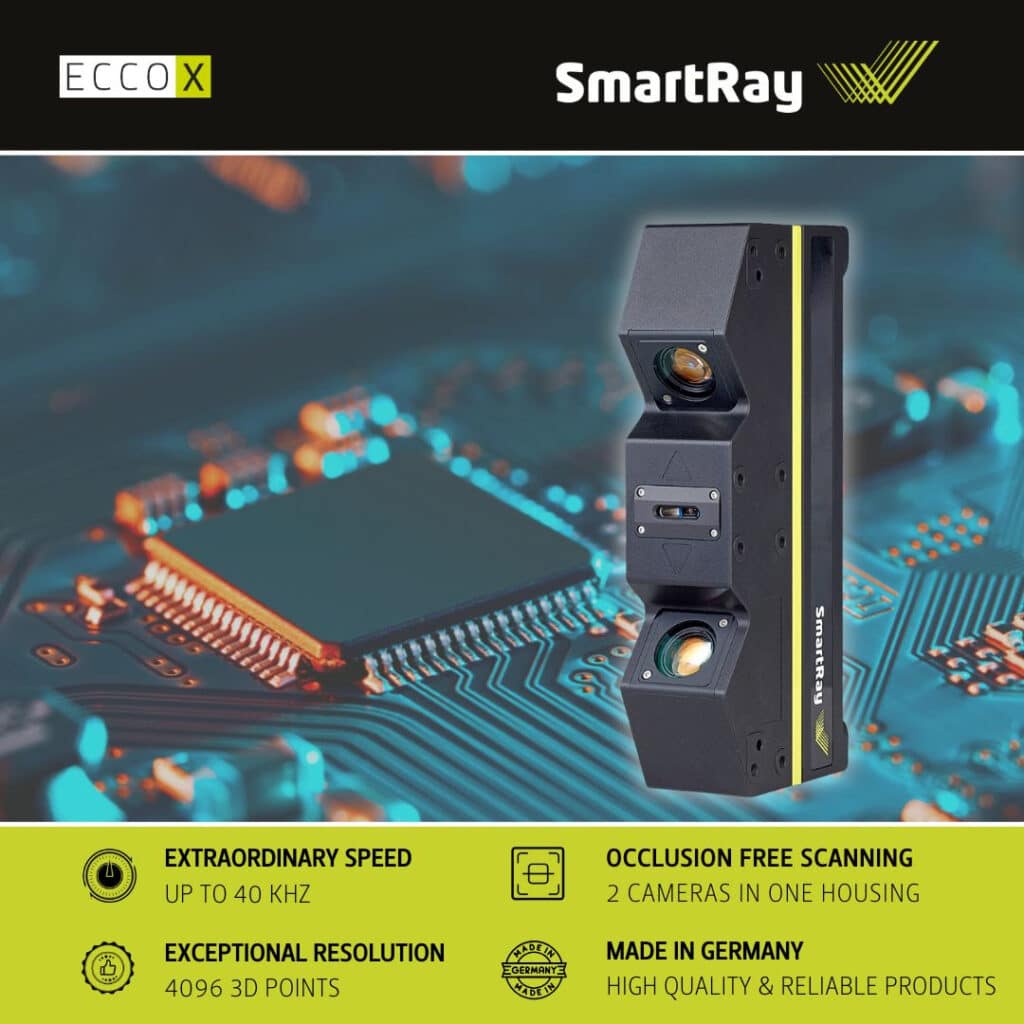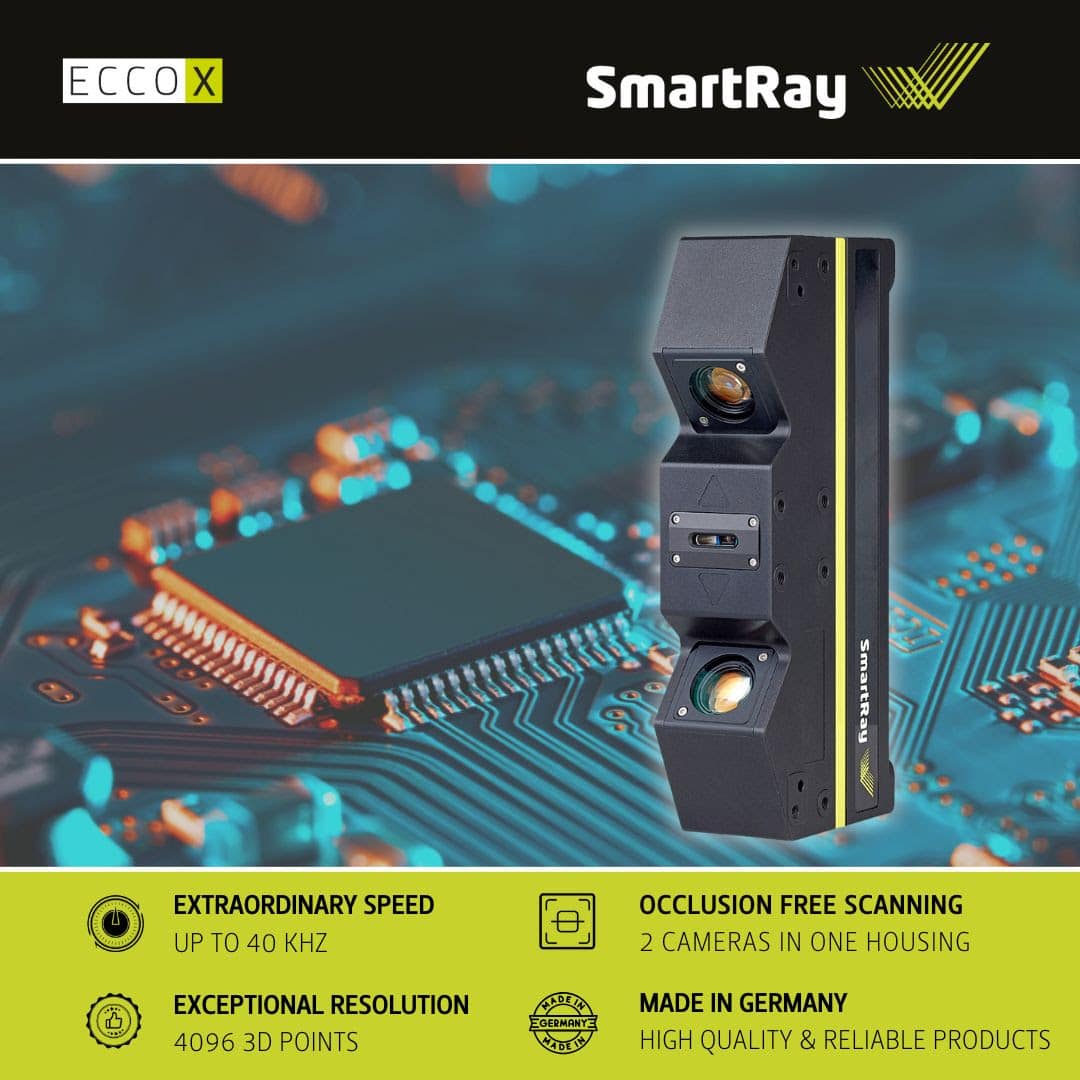3D inspection technology delivers metrology-grade accuracy with occlusion-free scanning—redefining quality control in automotive, semiconductor, and electronics manufacturing.

SmartRay has introduced the ECCO X 025 Dual-Head, a powerful addition to its high-performance ECCO X family of 3D sensors. Designed for precision-driven inspection environments, this new sensor combines dual-head architecture with the metrology-grade capabilities of the X platform, setting a new standard in automated 3D scanning.
Traditional single-head 3D sensors often suffer from occlusion—when raised features block the camera’s view of a laser target, resulting in shadowed or missing data. This sensor tackles this challenge with a symmetrical dual-camera setup, dramatically reducing occlusion and ensuring continuous, full-field visibility—even on highly complex or reflective surfaces.
The key features are:
- Scan rates up to 40 kHz for high-speed inspection
- Captures 4096 3D points per profile
- Enables 100% inspection coverage at production speeds
- Equipped with standard laser class lc 3R
- Supports shorter exposure times for faster scanning
- Ideal for real-time, in-line industrial inspection
Engineered for demanding industrial environments, the Dual-Head is particularly well-suited for automotive manufacturing—capable of inspecting structural and reflective parts like battery trays with unmatched accuracy. In semiconductor and electronics production, where surfaces are small, shiny, and feature intricate geometry, it enables precise inspection of conductor wire bonding, BGA solder joints, and populated PCBs. Core specifications include a 25 mm field of view (FOV) at mid-range, a typical measurement depth of 20 mm, and a blue 450 nm laser.
Claire Rathsack, Business Manager for the ECCO line, emphasized the breakthrough: “With the ECCO X 025 Dual-Head, we’re giving manufacturers a robust solution to eliminate shadowing and maximize inspection fidelity. This innovation significantly enhances reliability and throughput for parts where standard sensors fall short.”
For more information, click here.

